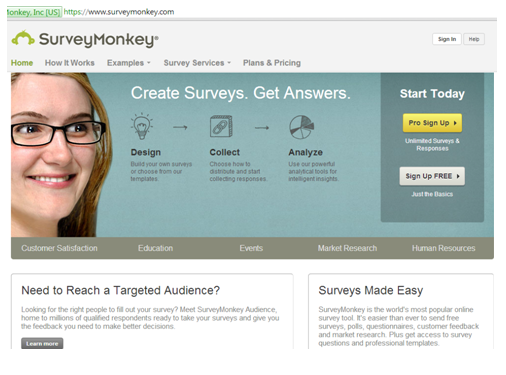
Questionnaires can be classified as both, quantitative and qualitative method depending on the nature of questions. Specifically, answers obtained through closed-ended questions (also called restricted questions) with multiple choice answer options are analyzed using quantitative methods. Research findings in this case can be illustrated using tabulations, pie-charts, bar-charts and percentages.
Answers obtained to open-ended questionnaire questions (also known as unrestricted questions), on the other hand, are analyzed using qualitative methods. Primary data collected using open-ended questionnaires involve discussions and critical analyses without use of numbers and calculations.
There are following types of questionnaires:
Computer questionnaire. Respondents are asked to answer the questionnaire which is sent by mail. The advantages of the computer questionnaires include their inexpensive price, time-efficiency, and respondents do not feel pressured, therefore can answer when they have time, giving more accurate answers. However, the main shortcoming of the mail questionnaires is that sometimes respondents do not bother answering them and they can just ignore the questionnaire.
Telephone questionnaire. Researcher may choose to call potential respondents with the aim of getting them to answer the questionnaire. The advantage of the telephone questionnaire is that, it can be completed during the short amount of time. The main disadvantage of the phone questionnaire is that it is expensive most of the time. Moreover, most people do not feel comfortable to answer many questions asked through the phone and it is difficult to get sample group to answer questionnaire over the phone.
In-house survey. This type of questionnaire involves the researcher visiting respondents in their houses or workplaces. The advantage of in-house survey is that more focus towards the questions can be gained from respondents. However, in-house surveys also have a range of disadvantages which include being time consuming, more expensive and respondents may not wish to have the researcher in their houses or workplaces for various reasons.
Mail Questionnaire. This sort of questionnaires involve the researcher to send the questionnaire list to respondents through post, often attaching pre-paid envelope. Mail questionnaires have an advantage of providing more accurate answer, because respondents can answer the questionnaire in their spare time. The disadvantages associated with mail questionnaires include them being expensive, time consuming and sometimes they end up in the bin put by respondents.
Questionnaires can include the following types of questions:
Open question questionnaires. Open questions differ from other types of questions used in questionnaires in a way that open questions may produce unexpected results, which can make the research more original and valuable. However, it is difficult to analyze the results of the findings when the data is obtained through the questionnaire with open questions.
Multiple choice questions. Respondents are offered a set of answers they have to choose from. The downsize of questionnaire with multiple choice questions is that, if there are too many answers to choose from, it makes the questionnaire, confusing and boring, and discourages the respondent to answer the questionnaire.
Dichotomous Questions. Thes type of questions gives two options to respondents – yes or no, to choose from. It is the easiest form of questionnaire for the respondent in terms of responding it.
Scaling Questions. Also referred to as ranking questions, they present an option for respondents to rank the available answers to questions on the scale of given range of values (for example from 1 to 10).
For a standard 15,000-20,000 word business dissertation including 25-40 questions in questionnaires will usually suffice. Questions need be formulated in an unambiguous and straightforward manner and they should be presented in a logical order.
Questionnaires as primary data collection method offer the following advantages:
At the same time, the use of questionnaires as primary data collection method is associated with the following shortcomings:
Survey Monkey represents one of the most popular online platforms for facilitating data collection through questionnaires. Substantial benefits offered by Survey Monkey include its ease to use, presentation of questions in many different formats and advanced data analysis capabilities.

Survey Monkey as a popular platform for primary data collection
There are other alternatives to Survey Monkey you might want to consider to use as a platform for your survey. These include but not limited to Jotform, Google Forms, Lime Survey, Crowd Signal, Survey Gizmo, Zoho Survey and many others.
My e-book, The Ultimate Guide to Writing a Dissertation in Business Studies: a step by step approach contains a detailed, yet simple explanation of quantitative methods. The e-book explains all stages of the research process starting from the selection of the research area to writing personal reflection. Important elements of dissertations such as research philosophy, research approach, research design, methods of data collection and data analysis are explained in simple words.